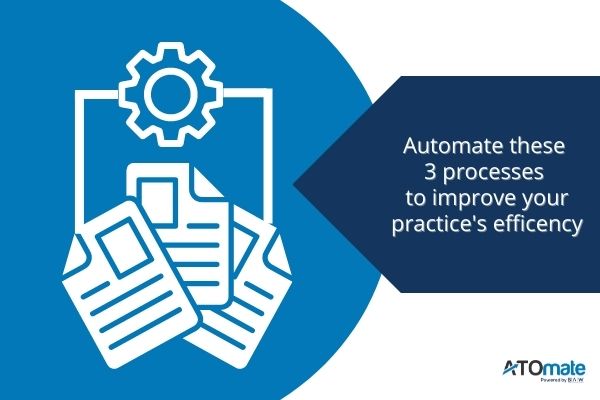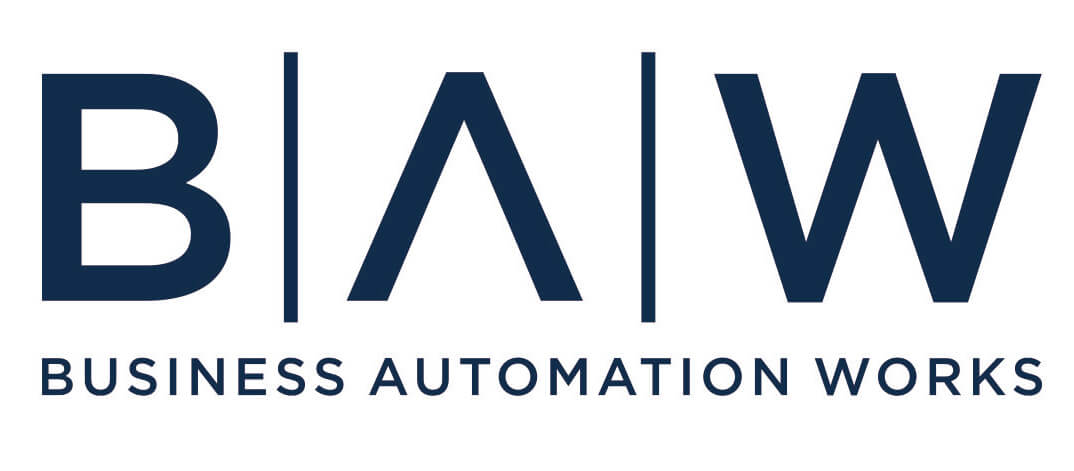Automate these 3 processes to improve your practice’s efficiency
TechnologyWhen was the last time you stepped back and reviewed your key business processes?
Are you keeping up to date with technology?
Is your current way of working still the best way for your team and your clients?
Could you be working more efficiently?

With client needs, and team capabilities constantly changing, we recommend you pause and reflect on your key business processes, to see if you can spot opportunities for improving efficiency and reducing waste. And there’s no better time to do this than the beginning of a new financial year.
Get your team together in a room or a Zoom, to brainstorm the processes or work that:
- frustrates them,
- has highly repetitive tasks, or
- is time-consuming.
When you have your list, plot the effort involved against the value or benefit you’re likely to gain from or by automation.
Then look for projects that can be implemented with little effort or with external help, and which dramatically improve business, client, and team member outcomes.
Not sure where to start? Here, we share 3 business processes you can automate and streamline with little effort for big returns.
1 – ATO document processing
Processing, checking, and distributing ATO documents is a perfect process for automation and there is no need to be doing this time-consuming process manually. ATOmate automates the entire process from document collection through to distribution, identifying errors or discrepancies along the way, and then automatically filing all correspondence back into your document management platform or filing system – cutting your ATO document processing time by up to 90%! With inbuilt TFN redaction and direct integration with the ATO and your practice management software, implementing ATOmate is a quick-win digital transformation project that will free your team up for more valuable tasks.
2 – Digital signing of documents
The days of sending documents out for signing and waiting for them to be returned are numbered. If you require multiple signatures on documents this can be time-consuming, sending and tracking the documents. There are now more efficient ways to have documents signed electronically which you can monitor and track easily. As well as being more efficient for your practice it’s important to make this process as easy as possible for clients, to make sure they are only viewing and signing what is required. FuseSign is designed to send documents to multiple people with different permissions for electronic signing. This also integrates with FuseDocs to automate the preparation of packages.
3 – Generating client proposals and fee agreements
There’s no denying, that editing client fee proposals, engagement templates, and fixed price agreements can be fiddley. However, you will probably find when you break them down – all of these documents typically include the same mix of information across clients e.g., services, layout, and engagement terms. Automating your proposal and engagement documentation is a great way to standardise your communications and ensure the client experience is seamless across your client base, regardless of who may be preparing the documents. There are several solutions on the market in this space that can help with the task – check out Fee Synergy or Practice Ignition.
If you feel like you’re too busy to streamline your processes or implement new automation, it’s a great indicator that now might be the perfect time to do so (with a helping hand!).
Book a discovery call today to find out how ATOmate can help you create more time for what matters by automating your ATO document administration.
Note: The specific solutions mentioned above are suggestions only, please do your research and find a solution right for your practice.





You are not authorised to post comments.
Comments will undergo moderation before they get published.